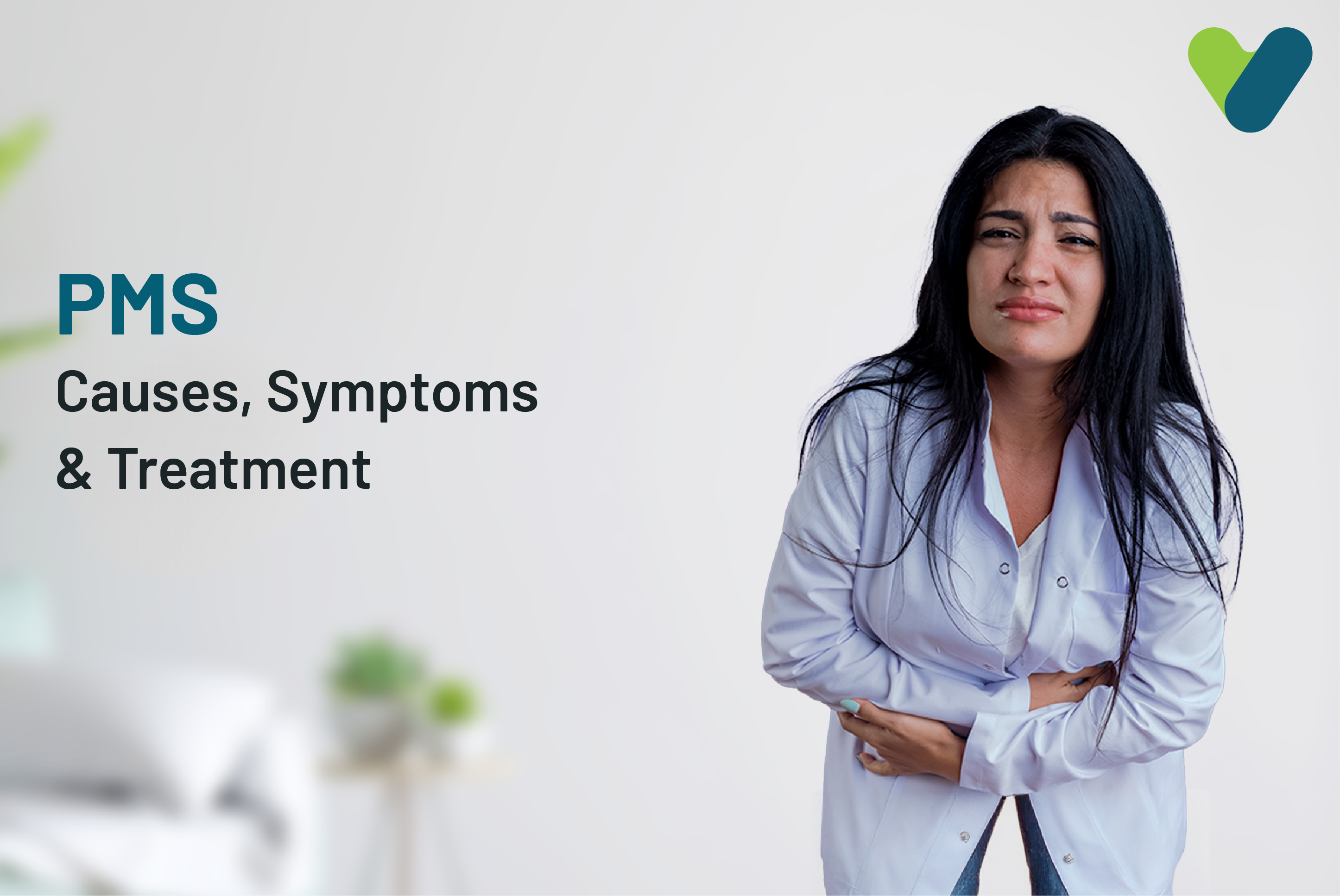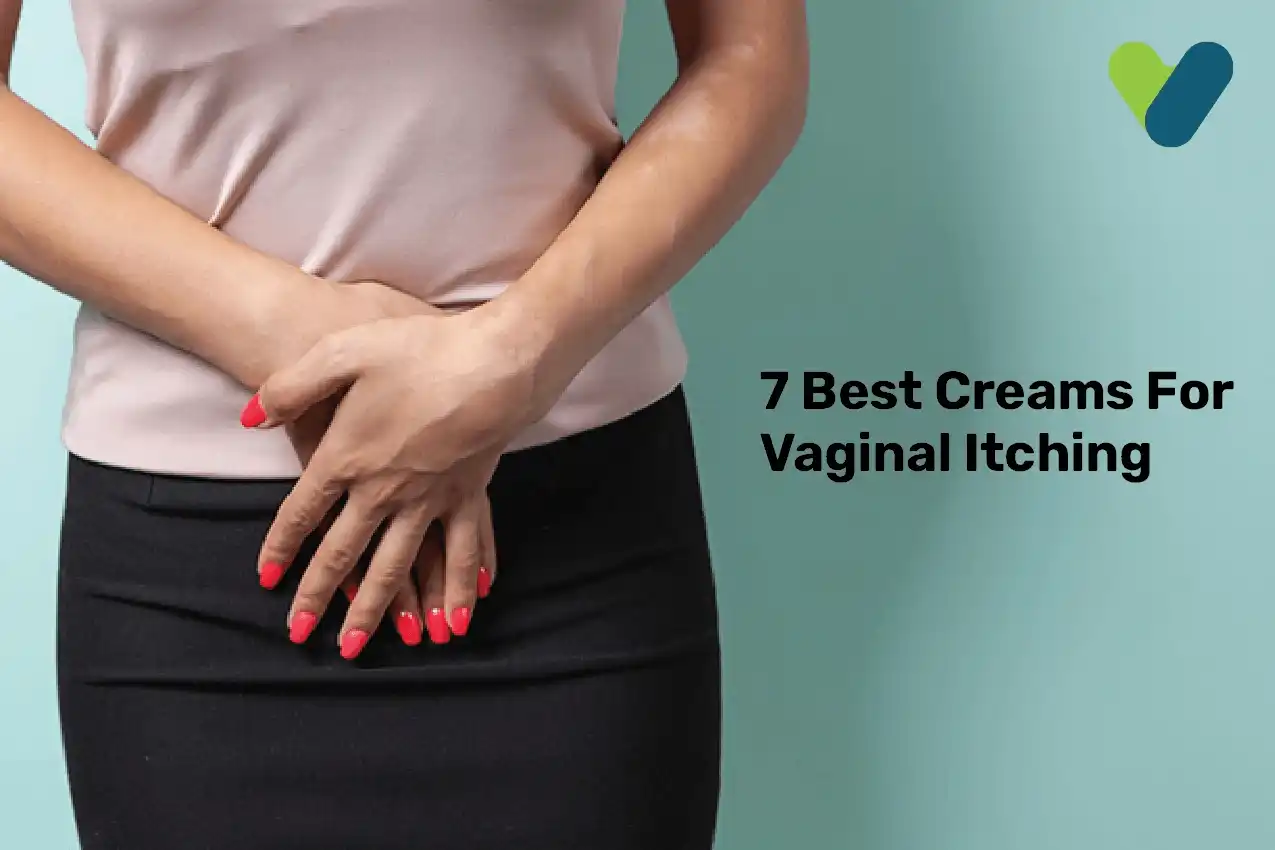Sarah was a marketing executive who was 35 years old. She has been suffering from PMS for years. Only a few days before the period, Sarah said she would experience bloating, irritability, and sensitivity, particularly around her breasts. She added, “I would just be mood-swinging around which would make me feel horrible”. We also noted that one participant said it was like she could not control her emotions anymore. Due to the physical and emotional effects of PMS, Sarah had a difficult day at work as well as her personal life.
“I just wanted to call it a day and go and hide in a corner away from everyone and everything,” she said. Thanks to consultation with the doctor, Sarah made some changes to her diet and is now taking medication to be able to minimize PMS impacts.
Wondering what exactly is this “PMS”? Read
What is Premenstrual Syndrome (PMS)
PMS is a set of physical, emotional, and psychological symptoms that will occur in many women in the week preceding menstruation. This is especially witnessed in the luteal phase of a female’s menstrual cycle, because of conflicting hormonal changes taking place in the system. PMS is however very common and affects about 75% of women of menstrual age to a certain extent. Some people may only feel mild discomfort while others may have severe manifestations manifesting as mood, energy, and physical changes at this time.Although it might not affect many women, PMS may be independent of age, which means that it may affect teenagers as well as perimenopausal women. Premenstrual syndrome commonly affects women aged between thirty and forty years according to research outcomes. Consequently, research has established that approximately 73-80% of ladies falling within this group will describe having PMS symptoms of puberty. It thus goes to show just how the aspect of womanhood may be affected by PMS, in both physical and emotional aspects of a woman’s well-being.
Symptoms of Premenstrual Syndrome (PMS)
Physical SymptomsPremenstrual symptoms can commence in a number of ways and forms and are likely to be different in every woman. Among the common physical symptoms, many experience:
Physical symptoms of PMS may include:
- Breast swelling and tenderness
- Abdominal bloating
- Fluid retention
- Constipation or diarrhea
- Headache and migraine
- Changes in appetite
- Acne
- Muscle and joint pain
- Lethargy and fatigue
- Depression
- Anxiety and tension
- Insomnia or oversleeping
- Change in sexual interest and desire
- Irritability
- Hostility and outbursts of anger
- Mood swings
- Difficulty concentrating
- Crying spells
- Social withdrawal
- Variation in Symptoms: However, as will be discussed later, the severity and type of these symptoms may differ from one woman to another and from one cycle to another making PMS even more challenging.
Knowledge of these symptoms will go a long way in wanting to reduce their impact during this phase of premenstrual. The symptoms and the amount of discomfort may also differ from one cycle to another for the same woman. Some women may experience just moderate discomforts, whereas others are subjected to considerable physical and emotional unbearable consequences of PMS.
Also Read : 9 Health Problems Related To Menstruation
Causes of Premenstrual Syndrome (PMS)
Hormonal ChangesDoctors do not know exactly what causes PMS. Fluctuations in female reproductive hormones (progesterone or estrogen) and brain chemicals may play a role although their exact significance is unclear. Hormonal levels seem to be the same in women whether or not they have PMS. It is possible that women with PMS are somehow more sensitive to these changing levels of hormones.
Genetic and Environmental Factors
Some epidemiological cross-sectional studies have attributed PMS to polygenic, with genetic and environmental determinations. It emerges from the understanding that genetic characteristics make some people prone to developing the condition. For example, one is predisposed to get PMS if they come from a family that has had a history of the same. PMS symptoms are found to be worse under conditions of high stress, whether at work or in interpersonal relationships.
Lifestyle Factors
In more severe cases, however, it is important to illustrate that hormonal fluctuations interact with other aspects, including diet, exercise, and chronic stress, that can act to crescendo the period of PMS. For example, the amount and type of food one takes during premenstrual Syndrome determines the extent of the discomfort experienced, including extreme bloating that results from processed foods coupled with caffeine and salt-laden diets. Some of these foods may also spur inflammation in the body and cause an augmentation in feelings of pressure or annoyance.
In contrast, the recommended level of physical activity has been found to have a positive relationship in the alleviation of PMS and the physical and psychological symptoms that arise with the occurrence of the syndrome.
Exercise, especially aerobic exercise, increases natural opioids in the brain (endorphins) and improves mood.In addition, the inclusion of stress-reducing exercises like yoga, meditation or deep breathing mechanisms that lower stress hormone production can work wonders in lowering the emotional swings in PMS and physical pain. These are measures of changing lifestyles including; good nutritional intake, exercise, and stress reduction measures all of which could be of great effect in minimizing the effects of PMS on persons.
Also Read : Learn More About Women’s Reproductive Health
Diagnosis of Premenstrual Syndrome (PMS)
Criteria for DiagnosisIn diagnosing premenstrual syndrome (PMS), one needs to see that this cluster of physical, emotional, and behavioral changes recurs regularly within the luteal phase, which is that two-week period before the commencement of menstruation. These symptoms tend to ease and start fading within the first few days of menstruation and these factors suggest that this is a hormonally related disease.
Distinguishing PMS from Other Disorders
PMS must be differentiated from other illnesses, for example, PMDD, a more extreme expression of PMS, with incapacitating emotional and psychological symptoms. Other medical conditions such as thyroid disorders or endometriosis may also exhibit symptoms almost identical to those of PMS; therefore, diagnosis must always be based on proper examination by a health practitioner.
Impact of PMS on Lifestyle
Impact on Work, Relationships, and Quality of LifeThe symptoms of PMS will interfere with the daily activities of a woman; therefore, she may lose her efficiency at work, her relations with family and friends suffer, and her quality of life decreases. Most women report being overstressed, irritable, and less productive before their period.
Common Misconceptions and Stigma
Despite its prevalence, PMS remains to this day largely misunderstood or met with a lack of seriousness, whereby some women are dismissed as being prone to "mood swings" or "being difficult." The stigma attached to this means that women may avoid bringing up their issues and asking for support and understanding about PMS-related afflictions.
PMS Treatment
PMS Lifestyle Changes
Effect of Work Involvement on Work Performance, Interpersonal Relationship and Quality of Life. The symptoms of PMS will affect the female in one way or the other in her productivity at the workplace, and relations with her family and/or friends as well as impair her quality of life. A majority of women say they feel overstressed, irritable, and less effective before their periods.Prescription PMS Medicine
For many women, lifestyle changes can help relieve PMS symptoms. But depending on the severity of symptoms, doctors may prescribe one or more medications for premenstrual syndrome. The success of medications in relieving symptoms varies among women.Women also get to learn that taking special PMS dietary supplements including chaste berry and evening primrose oil offer great dealing with their condition, making the feeling and physical complications of PMS bearable. These natural alternatives can complement typical pain management strategies, offering a holistic approach to alleviating discomfort.
If symptoms are more severe or prolonged, doctors suggest using hormonal drugs starting with oral contraceptives and ending with progesterone therapy, or antidepressants that help eliminate emotions and mood.
Consult a Gynaecologist today for a personalised treatment plan for PMS.
Also Read : All about Radical Hysterectomy
Managing Premenstrual Syndrome (PMS) Symptoms
Mindfulness and Relaxation InterventionsCognitive behavioral relapse prevention self-management strategies such as deep breathing self-meditation or progressive muscle relaxation will assist her in handling the PMS’s emotional and psychological manifestations.
Tricks of the Trade for Symptom Control
Women with PMS may be helped by tracking their symptoms, anticipating their worst days, and communicating their needs to family, friends, and coworkers.
PMS Alternative Treatments
Herbal Remedies and SupplementsSome women have reported their cycles to become more regular together with reduced PMS symptoms after taking herbal remedies like chaste berry (Vitex agnus-castus) or St John’s wort, nutritional supplements like magnesium or vitamin B6
Acupuncture and Yoga
Acupuncture and Yoga Have also been considered as potential Complementary therapies for women with PMS where some clinical researches suggest that both therapies might help reduce some of the physical and mood changes in women with PMS.
Premenstrual syndrome is not a rare condition, although it is a very complex one which can often affect a woman's routine significantly. Once the information is gained relating to its symptoms and causes as well as all the available treatment options, women can take some steps to bring their PMS under control and live a better life.
Healthcare providers, family, and friends can also play an important role in guiding support for women with PMS while letting more people understand that this isn't an ordinary condition.
Also Read : Powerful Nutrients to Enhance Women’s Health
References:
- Premenstrual syndrome (PMS). Office on Women’s Health [Internet].
- Premenstrual Syndrome - PMS Symptoms. MedlinePlus [Internet].
- Premenstrual Syndrome (PMS). American College of Obstetricians and Gynecologists[ Internet].


